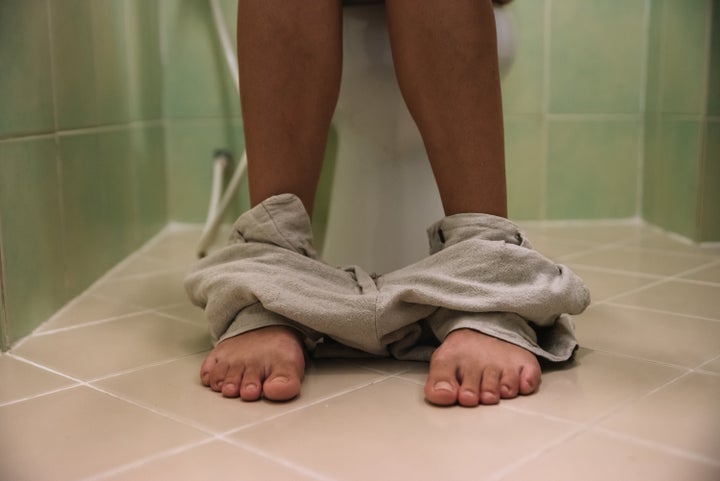
We’ve all been there. You’re on your way home and there’s a nagging sensation that you need to pee – but obviously, there’s still a way to go, so you push away the thought and distract yourself.
Suddenly, you can see your home and you can no longer suppress the thought. You need to pee and you need to do it now. You’re scrambling for keys on your way up the path, you’re starting to feel VERY uncomfortable before getting in the door, racing to the loo and, finally, the relief of release.
But, why does it happen? Why do we have control over our bladder until that very last moment?
Let us introduce you to the phenomenon called “latchkey incontinence”.
What is ‘latchkey incontinence’?
According to Harvard University, this effect can happen as a result of people waiting to arrive home until they “relieve themselves”. The brain then gets used to this pattern and associates arriving home with the need to go.
Apparently, this doesn’t always happen when you already need to pee, and can actually happen whether your bladder is full or not.
Harvard University recommends tackling this issue with bladder training, which, according to the University of San Francisco, is a form of behavioural training that often involves these following instructions:
- Empty your bladder as soon as you get up in the morning. This act starts your retraining schedule
- Go to the bathroom at the specific times you and your health care provider have discussed. Wait until your next scheduled time before you urinate again. Be sure to empty your bladder even if you feel no urge to urinate. Follow the schedule during waking hours only. At night, go to the bathroom only if you awaken and find it necessary
- When you feel the urge to urinate before the next designated time, use “urge suppression” techniques or try relaxation techniques like deep breathing. Focus on relaxing all other muscles. If possible, sit down until the sensation passes
- If the urge is suppressed, adhere to the schedule. If you cannot suppress the urge, wait five minutes then slowly make your way to the bathroom. After urinating, re-establish the schedule. Repeat this process every time an urge is felt
- When you have accomplished your initial goal, gradually increase the time between emptying your bladder by 15-minute intervals. Try to increase your interval each week. However, you will be the best judge of how quickly you can advance to the next step. Increase the time between each urination until you reach a three- to four-hour voiding interval
- It should take between six to 12 weeks to accomplish your ultimate goal. Don’t be discouraged by setbacks. You may find you have good days and bad days. As you continue bladder retraining, you will start to notice more and more good days, so keep practising
Of course, if you are finding that you’re experiencing this sensation often or to a debilitating degree, speak to your doctor before undertaking any bladder training, in case there is an underlying cause.